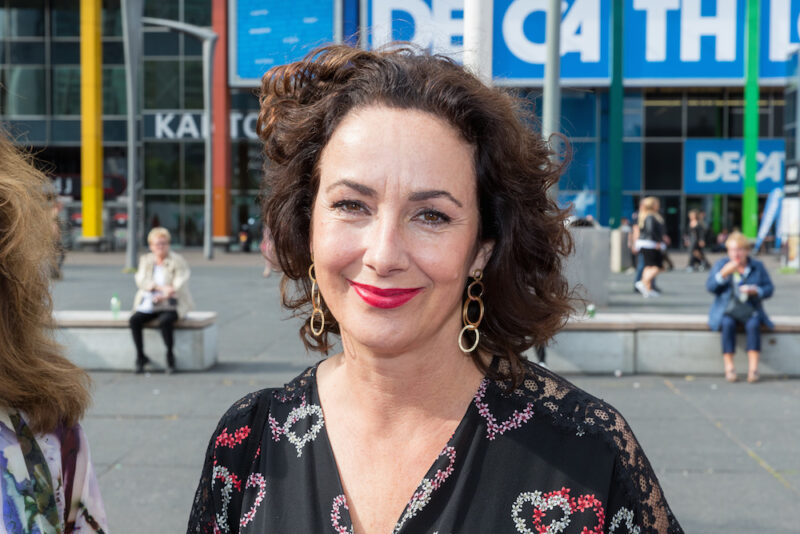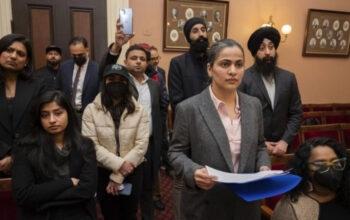Like several other European cities visited, Amsterdam experienced a dramatic pause in tourism during the early stages of Pandemi Covid-19. With a closed Dutch border and main attractions such as Rijksmuseum which is emptied from the usual crowd of international visitors, local residents can reclaim the city’s historic heart.
Now, Amsterdam leaders are determined to permanently shift the economic balance between population and tourists, and rethink Amsterdam’s free wheel image as a magnet for tourists who are looking for sex and drugs. “People who have lived here have long been alienated,” said the Mayor of the City, Femke Halsema. “We do not want to be Venice or Dubrovnic, where your historical center has become a closed amusement park. In the future it must be a part of a livable city.”
Appointed to position in 2018 as Amsterdam’s first female mayor, Halsema was previously the leader of the Dutch Green left party, and she felt her liberal political background would help him convince the city council to join his efforts to control marijuana in the city that saved marijuana in the city in the city in the city in the city in the city The city is Cannabis Coffeeshops and its famous sex industry. Halsema is also currently wrestling with a crisis of housing affordability: The cost of living in Amsterdam has long been a concern for economists and local officials, who refer to a very low housing supply level and the increasing influence of short -term rental services such as airbnb.
Bloomberg Citylab recently spoke with a 56-year-old Mayor about the risk of outourism, the future of the famous red light district in the city, and why he wanted Amsterdam to no longer attract people who wanted to take “moral holidays.” Our conversation has been edited lightly and thickly.
Can you tell us about your vision for the city?
I think Amsterdam is always and will become an international city. We depend on international trade. Many international companies are based here in Amsterdam. There is no change in that perspective. We like tourists in our city. They are also an important part of our local economy. Especially when tourists come for the beauty of our city, for our museum or for our night culture. But we have problems with some tourists. This is not with tourism but with the minority behavior of tourists.
The number of tourists is another problem. Florence welcomed 14 million tourists per year, and they said it was too much. Barcelona welcomed 20 million tourists per year, and they said it was too much. Amsterdam welcomed 22 million tourists per year, and that was too much.
So what do you mean by too much, and how much needs to go down?
I can’t give a number. It depends on the behavior or way of tourists spread throughout the city.
We have to overcome two problems. The first problem is what I call the London problem: Our city becomes too expensive. It is also part of becoming an international city and has many expatriates living here. But has consequences for the middle class. It is very difficult to find a house in Amsterdam except for the highest income, so our middle class teacher, police officers, people who work in health care- leave the city. We are very alert about it. In order for a city to survive in the long run, you need social stability and people from the middle or lower classes also feel at home.
Our second problem is the problem of Venice: people who live here become alienated, especially in the city center, because it is no longer part of their city. We must find a new balance, being home to people from Amsterdam and at the same time welcomed visitors and international tourists.
Are there certain types of tourism that you don’t welcome in Amsterdam?
This is not a form of tourism that we welcome or not accepted- it is a form of behavior. What we did not welcome were people who came here while on vacation from morals. They express a form of behavior that they will not express at home. People who come here lose their morals are a problem for us.
This was also a mistake in the Dutch and Amsterdam government in the past. We are very enthusiastic about welcoming economic and tourism activities, especially after the 2008-2009 financial crisis. But Amsterdam has a long tradition of being very liberal and progressive. We have become a safe place for many minorities and free thinkers. In Amsterdam, there is a state of tolerance. We always argue that marijuana must be legalized and prostitution should not be criminalized. It is also part of the history of Amsterdam, the history that we are very proud of.
But drug culture and prostitution have been commercialized internationally. That’s not what is meant. We must improve the way we advertise the city in the last 15 years. For example, we have sex entrepreneurs and their business models are based on attracting as many people as possible from other European cities. That’s a business model that in my opinion is no longer acceptable.
So Amsterdam should no longer be considered a place to be tall? Is that something you want to change?
Yes I think so. This is a place where you have to go if you are looking for a beautiful museum, or to see an underground culture, or if you want to attend our pride. We do not want our traditional liberalism to be replaced by conservatism. That’s not what we are going to.
In recent years you have proposed to impose some major changes in the city red light district, including window restrictions along the road and even move prostitution out of the environment completely. Can you talk about the current situation from the red light district?
In the past, the red light district was a safe workspace for sex workers. There are Amsterdammers and international visitors who come to women, but now attract many people who only stand in front of the window and laugh at sex workers. I assume that violations of their human rights. We don’t want to criminalize prostitution. For me, this is a very important trans woman and worker can do their work in a safe condition and in accordance with human rights.
Another problem in the red light district is to create too much noise and cause too many problems for people who live there. And the third problem is mingling with organized crimes.
That is why you propose to establish a “erotic center”- move prostitution to a site that was built specifically outside the center of historic city.
Discussions about prostitution and red light districts have been frozen for years; No one wants to discuss it because it has a moral theme. Do you support the legalization of prostitution or oppose? I have tried to make it a more pragmatic discussion. Here, there are offers and requests. As long as, especially men, go to sex workers, there will be sex workers. The best thing we can do is give them the best working conditions to do their work.
I gave the city council of four scenarios for the future of prostitution in Amsterdam, and they chose an erotic center. There is a party that is interested. They want to make a festive erotic center. I always like to make comparisons with Moulin Rouge, where sexuality is a good and good part of daily life. Erotic center must stand, become chic. We are in the stage of finding a place in the city where he can start. It’s not easy, as you can imagine. Many people in Amsterdam support the erotic center- but not in their backyard.
Related, can you tell us about your plans in Coffeeshops? [While marijuana is not legal in the Netherlands, ownership of up to five grams is decriminalized and “CoffeeShops” licensed is permitted to sell a small amount of drugs to those aged over 18 years.
I think marijuana should be ratified. I think the war against drugs is only good news for organized crimes. It enriching organized crimes. For a long time, the Netherlands was very effective in separating the soft and hard drug market. But what we see, especially under the influence of international visitors, is that our cannabis market has become large. The number of Coffeeshops has dropped, but demand for cannabis has increased. A lot of money through this market, which makes it very vulnerable to organized crimes.
I have asked the Temporary City Council to prohibit tourists from Coffeeshops. This will be discussed in September. I think the city council will not accept my proposal because of the international reputation of the city and because they are very worried that all tourists will start buying it on the streets. But I say we already have 2,000 dealers [drugs] in the center of historic city, and they are there especially because of tourists. Tourists buy their cannabis at Coffeeshops, but they buy drugs, cocaine or anything on the streets. The market is booming for dealers. This is one of the reasons why tourists who are on a moral vacation come to Amsterdam, and also many of them say, “We will not come again if we cannot visit Coffeeshops.”
So, is your proposal to prohibit tourists from buying weeds at Coffeeshops more about tourism or crime?
Both of them. Mixing with organized crimes is the effect of high demand for cannabis.
Amsterdam Baru -Newly accepted many foreign residents, especially after Brexit, and some local residents complained of housing prices rising due to the entry of this expatriate. You say you accept too many tourists. Is there a threshold for the number of expatriates that you want to host too?
We strongly support international mobility and freedom of mobility. It is very difficult for me to say it’s enough. We have a large building assignment in front of us- we will build a new environment complete with 70,000 houses. We also have to rethink mobility in this region, so that it becomes easier for central and lower classes to live in Amsterdam. We have become a busy city, but we see the possibility of being more dense. We are also looking for the possibility to build on water. We hope we also find a solution there.
What do you do to make the house more affordable for middle and low -income residents?
We try to influence the housing market as much as we can, and there we are different from London or New York or other big cities. Building companies and companies that rent must be in accordance with the rules 40-40-20, which means 40% social housing 40% middle class housing and 20% upper class. That gives us some possibilities to maneuver the housing market.
Amsterdam is also the leader in regulating AirBnb. Do you think you need more steps to manage companies and similar short -term rental services?
Yes, I think we still need more steps. We have been able to manage airbnb, especially in the center of historic city, but what we see that especially in our most vulnerable environment, we have a house where no one lives because they rent it. People who live in the environment feel alienated. That’s really not good.
Another great concern is climate change. Are you worried about the future of Amsterdam in 50 to 100 years? Some scientists said the city could look very different at that time.
Amsterdam has proven itself as a very tough city for hundreds of years. It has a creative population; We always find a solution. Amsterdam was built on a wooden stick. Who can imagine? And it’s still there! So no, I’m not worried. I think we have challenges- but we will find a solution.
Is it easier to push your agenda with your political background? Is it easier to convince the city council about some of your proposals?
We have a liberal city council, and yes, it is in a conservative country. Amsterdam has always been a strange place. I think they understand what my motive is. I don’t want to make Amsterdam conservative. The opposite: I am very proud of the tolerant tradition in Amsterdam. For example, commercialization of historic city centers has expelled night clubs, and that is very unfortunate. It should be a place where all progressive and liberal movements are united. It has become a place in the past. Traditionally, this is a place where the main Amsterdam and underground find each other. I want to return the unconventional Amsterdam.






